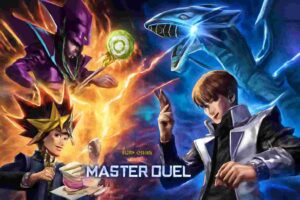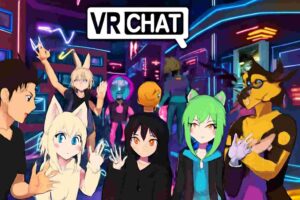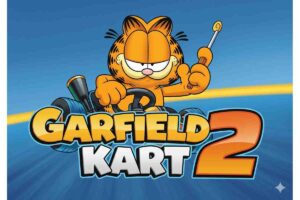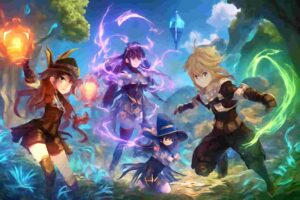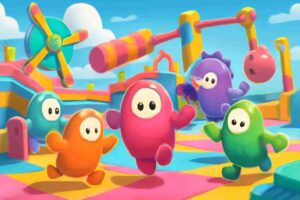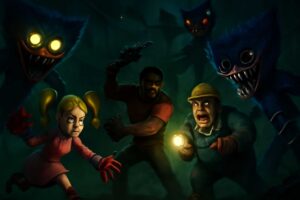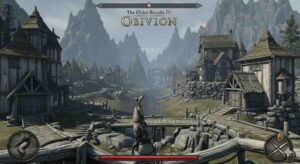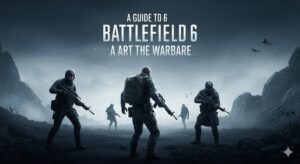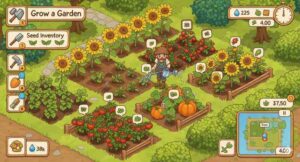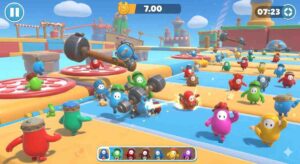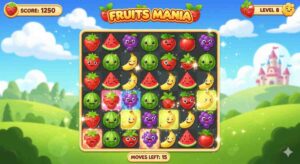Introduction
One of the most talked-about horror games in the last few years is Poppy Playtime. It has creepy toys, puzzles to solve, and sudden scares that make it a short but unforgettable experience. At first, the game may seem easy, but the way it builds tension keeps players interested. The game has a strong effect on you whether you watch others play or play it yourself in the factory. Let us look at what makes Poppy Playtime fun, why people keep coming back, and how it stacks up against other horror games.
What is Poppy Playtime?
MOB Games made Poppy Playtime, a horror game in the first person. Inside an old toy factory is where it happens. You are a former employee who goes back to the factory after many years to look around. There were weird things that happened there, and now the toys are real.
Each chapter of the story reveals new parts of the factory and new secrets about the company. The first chapter introduces players to Huggy Wuggy, the big blue toy that has become the series’ mascot. The next chapters add new monsters, more puzzles, and more lore.
Tone and Atmosphere
The game gives off a creepy vibe as soon as you walk into the factory. Underneath the bright colors and fun designs, there is something darker. The factory seems empty, but the silence makes you feel uneasy. Every noise, from footsteps to clanking in the distance, makes the tension rise.
The game is different because it has both childlike toys and scary places. When you realize the toys want to hurt you, bright colors become scary. The long halls, buzzing lights, and sudden noises in the factory make every corner feel dangerous.
How to Play
Poppy Playtime is a mix of exploration, puzzle-solving, and survival horror. You walk around the factory, solve puzzles, pick up things, and learn the story through recordings and notes.
The most important tool is the **GrabPack**. It has long, extendable hands on wires that attach to the backpack. With these hands, you can: – Press buttons and pull levers.
– Carry things a long way.
– Swing over things in your way.
– Change the power to open doors.
The GrabPack is not just a trick. It helps you move forward and stay safe from threats at the same time.
Toy Monsters and Huggy Wuggy
Huggy Wuggy is the most well-known character in Poppy Playtime. At first, he looks like a statue that will not hurt anyone in the lobby. Later, he comes to life and chases you through dark hallways and vents. Even when you know he is coming, his long arms, big smile, and glowing eyes make him scary.
Other chapters introduce new bad guys who are toys:
– In Chapter 2, “Mommy Long Legs.” A pink, stretchy toy that hides in the dark and makes fun of you while you work on puzzles.
– PJ Pug-a-Pillar, a mix of a dog and a caterpillar that chases you in mini-games.
– Poppy, the doll that is linked to the factory’s deeper mystery.
Each bad guy has a different look and way to play. They make friendly toy designs into scary things, which is why they are scary.
Puzzles and Interaction
A big part of it is solving puzzles. Most of the challenges are about using the GrabPack to move power between nodes, open up areas, or connect switches. Some tests check your memory, timing, or ability to see things.
Some puzzles are easy, but others make players think about the order and sequence of things. The design makes the puzzles short enough that they do not lose their tension, but interesting enough that solving them feels good.
Chapter 2 has mini-games that make things more interesting. You do memory games, rhythm challenges, and survival levels. Each mini-game combines puzzles with danger, so you have to solve them quickly.
Story and Myth
You can learn about Poppy Playtime’s story through tapes, written notes, and clues in the environment. The game does not give everything away; instead, it lets players figure out the mystery.
Playtime Co., the toy company, is the main plot. The company was doing scary experiments behind its friendly face. The toys were not just toys; they came to life in scary ways.
The doll Poppy seems to have the answers. With each chapter, the player learns more about her. The story makes you wonder what happened to the workers, how the toys came to life, and what dark secrets the factory has.
Players stay interested because of the mix of mystery and horror. Many fans argue about theories online, which keeps the community going between chapters.
Style of Horror
Jump scares are not the only thing that Poppy Playtime uses. It scares players with sound, light, and speed. It is scary to walk alone through colorful but empty halls. Even when nothing happens, shadows and sudden noises make you more scared.
When monsters show up, the game goes into chase mode, which forces players to move through tight spaces. The vent chase with Huggy Wuggy is a great mix of speed, panic, and movie-like tension.
The scary part is not being scared all the time; it is the build-up. The game hits players with something shocking just when they start to relax.
Design and Graphics
The graphics in Poppy Playtime are meant to be both fun and scary at the same time. The dark, dirty factory rooms do not go well with the bright colors of the posters and toys.
The designs of the toys look like cartoons but are strange. Huggy Wuggy’s silly smile makes him stand out, but in the dark, it looks scary. Mommy Long Legs looks like a stretchy doll, but it moves in a way that is not natural.
Lighting is very important. To set the mood, there are flickering lights, glowing exit signs, and shadows. The factory looks like it has not been used in a long time, but it is full of danger.
Music and Sound
A lot of the tension comes from sound. There are echoing halls and mechanical sounds all over the factory. Even little noises, like vents rattling or machines humming, make stress worse.
Voice recordings from workers make things even more mysterious. The toys themselves talk or make noises that give you the creeps. The screams of Huggy Wuggy and the taunts of Mommy Long Legs are scary.
There is not much music; most of the time, silence carries the fear. When danger comes, sudden beats make people more scared.
How long it is and how much you can play it again
The chapters in Poppy Playtime are not very long. It takes about 30 minutes to read the first chapter. Chapter 2 and other later chapters are longer and take a few hours to read.
You want to play again because you want to learn more about the story or get better at the puzzles or scares. A lot of people also play the game again to show their friends. It does not have an endless amount of content, but people often replay it because of fan-made content and community theories.
Mods and the Community
The fans are a big part of what keeps the game going. Mods for PC add new skins, toys, or change the way things happen. Fans also post theories, art, and videos on the internet. Huggy Wuggy became a huge internet star with songs, cartoons, and parodies.
This wide range of fan interest has kept the excitement going between new chapters.
How it Compares to Other Horror Games
People have said that Poppy Playtime is like Five Nights at Freddy’s. Both games have scary mascots and scary things for kids. FNAF, on the other hand, keeps players in one room and makes them survive. Poppy Playtime, on the other hand, lets players explore an open world and solve puzzles.
Poppy Playtime has a different kind of fear because you can move around. You never know what is going to happen next.
What Poppy Playtime Does Well
– A one-of-a-kind mix of puzzles and horror.
– Scary toy villains with great designs.
– Factory setting that gives off a creepy vibe.
– The GrabPack system makes things more fun and creative.
– A mystery that keeps fans guessing.
Things that Poppy Playtime is not good at
– Each chapter is short.
– Some puzzles can get old fast.
– New players might get annoyed with chase sequences.
– The story is not completely clear yet, which makes some players confused.
Most players like the whole package, even with these problems.
Why It Became So Popular
Streamers and the internet made Poppy Playtime a big hit. People were interested in watching others play and yell at Huggy Wuggy. The first chapter was short, which made it easy for many people to get into.
It stood out because of its simple design, creepy toys, and strong atmosphere. It was scary enough to get people’s attention, but not so scary that it scared them away.
The Future of the Game
There are still more chapters to come in the game. Every time you get an update, you get new monsters, puzzles, and story pieces. Fans want the company to add to the story and keep the mystery around Playtime Co.
Fan projects, spin-offs, and animations are already spreading. In pop culture, Huggy Wuggy has become a scary mascot. The series has a bright future, especially since so many people in the community talk about and support it.
Last Thoughts
Poppy Playtime shows that a horror game does not need to be long or have big maps to be scary. It scares you in a new way by turning toys you know from childhood into monsters. The puzzles keep players interested, and the GrabPack mechanic is a smart addition.
Each chapter is short, but they all have scary moments that stick with you and make you want more. The mix of mystery, tension, and shocking moments makes it a must-play for horror fans.
Poppy Playtime is a good game to play if you like scary games with puzzles and a creepy setting. Just stay away from Huggy Wuggy.

